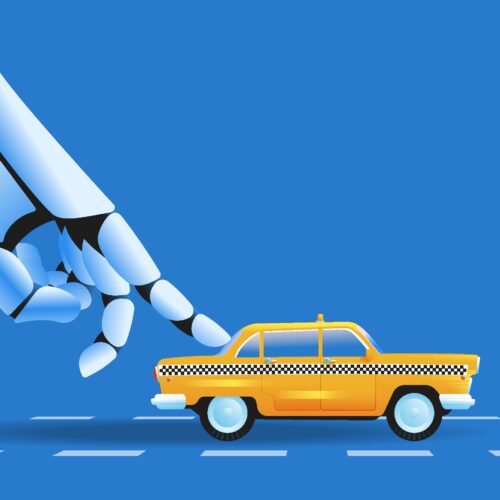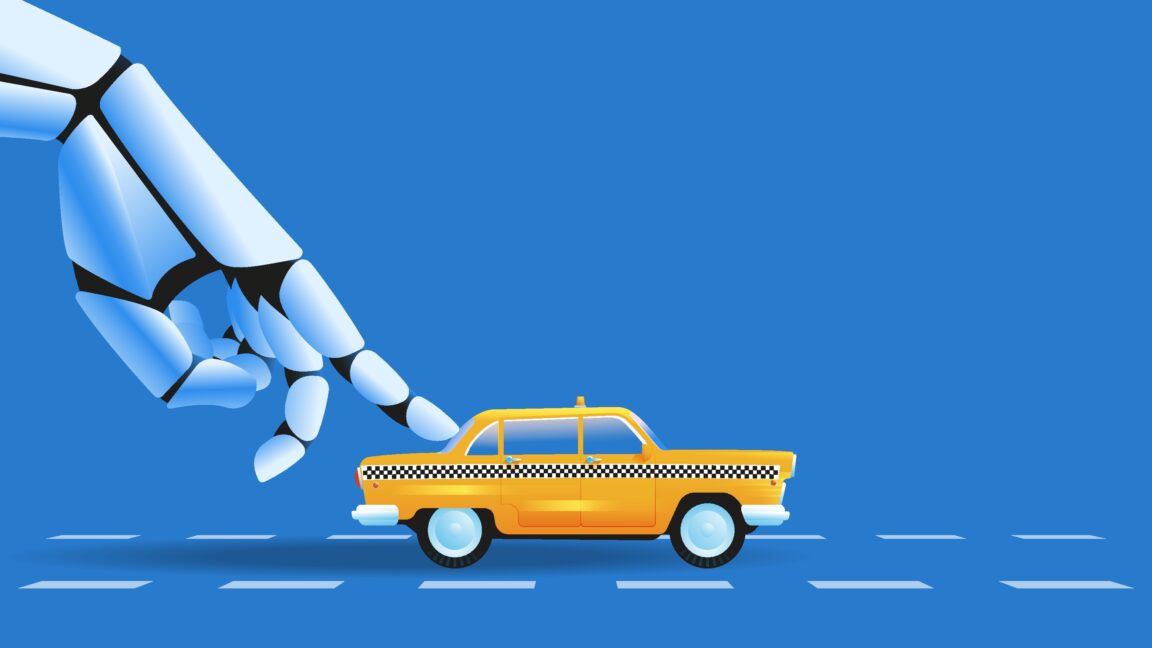Reading view
Uber makes multimillion-dollar investment in Lucid and Nuro to build a premium robotaxi service
TechCrunch Mobility: The Tesla robotaxi Rorschach test and Redwood’s next big act
Tesla has been working on modified Model Ys for its Robotaxi program
AP Photo/Eric Gay
- Tesla has been building modified Model Ys for its Robotaxi program, sources told BI.
- The project is referred to internally as "Halo" and involves cars with self-cleaning cameras and telecommunication units.
- Tesla's Robotaxi service launched in Austin with a geofenced area and in-vehicle safety monitors.
Inside Tesla's Austin factory, employees have built modified Model Ys for the company's high-stakes Robotaxi program, sources with knowledge of the matter told Business Insider.
The project, internally referred to as "Halo," involves cars with slightly different parts than the Model Ys that consumers can buy, the insiders said. Among other things, the Halo vehicles have self-cleaning cameras and extra protection for the cameras to prevent damage and debris, one person said.
The vehicles also have a second telecommunications unit in addition to the unit normally built into the Model Y, one person said. The units provide GPS coordinates for the vehicle and allow it to connect with remote operators.
Elon Musk told investors during the company's earnings call in April that Tesla would use remote operators who could intervene in the event of an emergency. AI engineering lead Srihari Sampathkumar posted a picture that appeared to show desks with steering wheels at Tesla's offices on Sunday.
Tesla plans to incorporate the Halo vehicles into its fleet later this year, sources with knowledge of the matter said. For its June 22 launch, Musk's automaker used Model Ys with self-cleaning cameras, as spotted by some observers on social media. Earlier this year, Tesla said on X it was working on a solution to keeping its cameras clean.
Musk has said that Tesla's Robotaxi operates solely off the cameras, and does not include LiDAR or radar sensors, unlike other self-driving companies.
Tesla did not respond to a request for comment.
Tesla rolled out its Robotaxi service to a select group of users. Shortly after the release, early invitees posted reviews on X and YouTube. Wedbush analyst Dan Ives said in a note to investors that his experience exceeded his expectations.
"The ride itself was completely smooth, and it was indistinguishable that the car was driverless as there was never a moment in the vehicle where we felt as if it did something irrational," he wrote.
For now, Tesla's Robotaxis will operate within a geofenced area in Austin. In addition to the remote operators, a human safety monitor sits in the passenger seat and can push buttons on the central screen to pull over or stop the vehicle. These buttons are also accessible to passengers via the screen in the rear of the vehicle.
The monitor also appears to be in communication with Tesla's remote safety drivers, according to one video posted to YouTube.
Musk said during the April earnings call that the company will start out with about 10 to 20 Robotaxis, with plans to expand further over time.
On launch day, Musk posted a picture of himself celebrating with the AI team. Shares of Tesla's stock were up 8% the day after the launch.
Musk has said that the self-driving software will allow Tesla owners to one day lease out their vehicles as robotaxis. Currently, Tesla owners can purchase a beta version of the company's Full Self-Driving software that requires a licensed driver to monitor the vehicle for $99 per month.
Do you work for Tesla or have a tip? Contact this reporter via email at [email protected] or Signal at 248-894-6012. Use a personal email address and a nonwork device; here's our guide to sharing information securely.
Waymo suspends robotaxi rides near LA protests after 5 cars are set ablaze
David Pashaee / Middle East Images via AFP
- Five Waymo vehicles were set on fire during protests in LA about Trump's immigration crackdown.
- The company suspended service in downtown LA, a spokesperson confirmed to BI.
- Waymo doesn't think the vehicles were intentionally targeted and is working with the LAPD.
Waymo suspended robotaxi service in downtown Los Angeles on Sunday after five vehicles were set on fire during protests against President Donald Trump's immigration raids in the city.
Photos show Waymo cars covered in anti-ICE graffiti burning in the street, engulfed in smoke.
A spokesperson for Waymo confirmed to Business Insider that five vehicles had been vandalized during the protests. The company temporarily suspended service in downtown LA and doesn't think its vehicles were intentionally targeted, the spokesperson said. Waymo is working with the Los Angeles Police Department, they added.
Mario Tama/Getty Images
FREDERIC J. BROWN/AFP via Getty Images
On Sunday night, the LAPD said on X that "burning lithium-ion batteries release toxic gases." Electric vehicles often use lithium-ion batteries.
The spokesperson told BI that Waymo, which Alphabet owns, operates more than 300 vehicles in LA and is continuing operations in other parts of the city.
RINGO CHIU / AFP
It's not the first time that Waymo vehicles have been targeted in California. Last year, a crowd in San Francisco set one of the robotaxis on fire during Lunar New Year celebrations amid a wave of distrust about driverless vehicles.
The protests broke out on Friday after an immigration raid in the city. Over the weekend, Trump bypassed California Gov. Gavin Newsom's authority and ordered 2,000 National Guard members to the LA area. Despite the dramatic images, the protests have largely been peaceful, according to multiple reports.
The demonstrations have become a political lightning rod between Newsom and Trump, and the governor has announced that he's suing the administration. They may, however, serve as an olive branch between the president and Elon Musk, who had an ugly falling out last week.
Zoox issues second robotaxi software recall in a month following collision
USPTO refuses Tesla Robotaxi trademark as “merely descriptive”
"We are an AI, robotics company," Tesla CEO Elon Musk announced last April. Despite the fact that the company's revenues are overwhelmingly derived from selling new electric vehicles, such prosaic activities hold no luster for the boss. Instead, Tesla's future, according to Musk, depends upon a (claimed) sub-$30,000 driverless two-seater, revealed to the world last October in a staged demonstration on a film set. But Musk's plans just hit a snag: The company must find some new names.
As spotted by Sean O'Kane at TechCrunch, the United States Patent and Trademark Office has informed Tesla that it will not be allowed to trademark the word "robotaxi" to describe the vehicle. According to the USPTO, the term is far too generic. Indeed, a Google n-gram search shows a steady growth in the use of "robotaxi" starting more than a decade ago.
According to the USPTO, the term is merely descriptive. The agency cites evidence from Wikipedia, The Verge, and the Amazon-backed autonomous vehicle startup Zoox in its denial of Tesla's trademark application.


© Getty Images